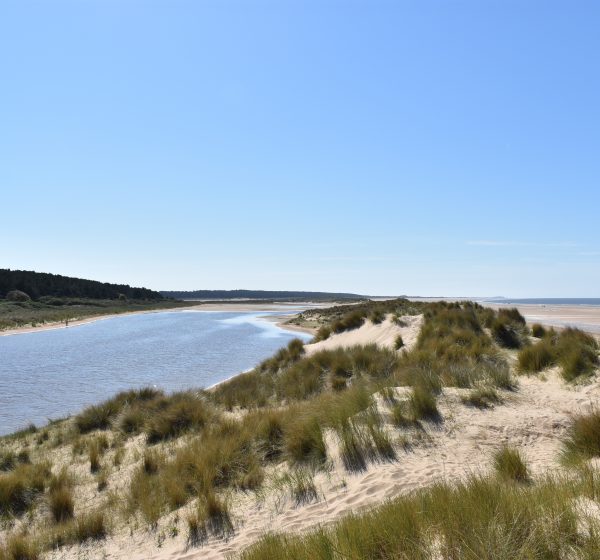
Holkham Beach & Nature Reserve
Saltmarsh

Sheltered from the pull of the tides, any sediment from the sea soon builds up into a skim of mud and silt. Over the years the layers of sediment evolve into saltmarsh. In summer, exposed to wind and sunshine, the lower mudflats dry out and are frosted by salt crystals. Glasswort and Annual Seablite are the only plants to cope with the sudden shift from chilly ooze to salty desert. By contrast, the middle and upper levels of Holkham’s saltmarshes are more diverse. Sea Aster looks like Michaelmas Daisy and its flowers are a pale magenta. Sea Lavender forms extensive carpets and creates a misty-blue haze around creeks. A closely related plant, the Matted Sea Lavender, is a North Norfolk speciality and forms cushions rather than carpets.



The plant which gives the upper marshes their distinctive character is the Shrubby Seablite. This is a dark green chunky shrub with a mass of tiny cylindrical leaves. Although it is common on the Norfolk coast it is uncommon to the north or west. It also has the distinction of being the first shelter for weather-blown migrant birds arriving on the coast, which is why bird-watchers pay Seablite bushes special attention in October.
In the breeding season the mid and upper marshes ring to the loud, fretful call of the Redshank, which nests in tussocks and feeds in the creeks and muddy saltpans. In the winter these same marshes are grazed by Brent Geese, Shelduck and waders. Against the evening sunshine the shimmering herds of grazing wildfowl and the wide horizon of the saltmarshes combine to create a lasting impression: one of the finest wildlife sights of Europe.

Recent rarities:
- Pallas’ Warbler – Siberia
- Yellow-browed Warbler – Northern Siberia
- Dusky Warbler – North/Central Asia
- Kiddie’s Warbler – Central Asia
- Siberian Thrush – Siberia
- Sardinian Warbler – Mediterranean
- Roller – South/Eastern Europe
- Hoopoe – Central Europe
- White-tailed Eagle – Scandinavia
- Alpine Swift – Southern Europe
- Sociable Plover – South East Russia
- White-winged Black Tern – South East Europe
- Little Bittern – Continental Europe
- Black-eared Wheatear – Southern Europe
- Olive-backed Pipit – Siberia
- Red-breasted Nuthatch – North America




